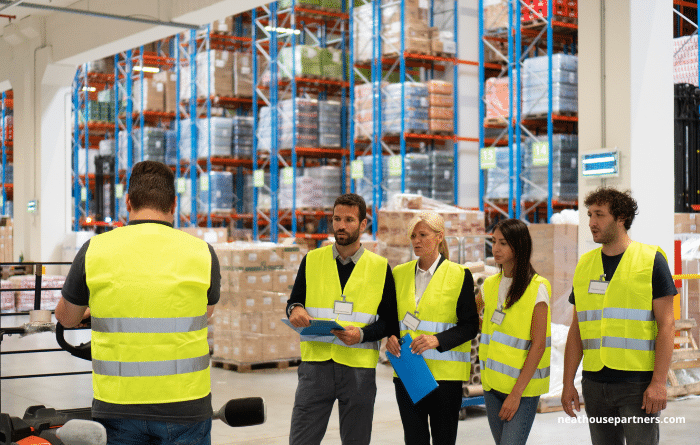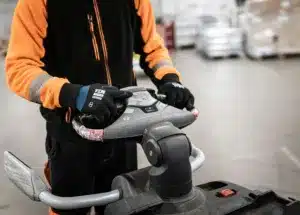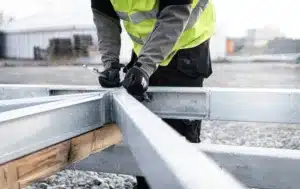As an employer in the UK’s manufacturing sector, whether you’re running a small or medium-sized business, managing a large company, or heading up an HR department, it’s imperative to understand the common safety pitfalls that could have serious implications for your business and employees.
Read on for some case studies of recent prosecutions that underline the importance of adhering to health and safety legislation in manufacturing settings, and provide practical lessons for businesses looking to improve their internal safety measures and work practices.
Why It Matters
By learning from the cases highlighted below, you can avoid similar mistakes, protect your employees, comply with UK legislation, and save on potential fines.
More importantly, though, you will be establishing a culture of safety and compliance within your organisation which is beneficial to employee morale, productivity, and your business’s reputation.
Importance of Proper Machinery Guarding
Manufacturing often involves the use of heavy machinery, which, if not appropriately guarded and handled, can lead to severe accidents.
Take, for example, a case involving ADA Machining Service Ltd. A lack of proper machinery guarding resulted in a worker’s hand being partially severed, leading to the company being fined £20,000.
A significant concern here was that an unsafe practice of employees walking on the rotating table of the machine while in operation had become standard.
As an employer, you are obligated under the Health and Safety at Work etc Act 1974 (HSWA) Section 2 to ensure, so far as reasonably practicable, the health and safety of your workers.
- It is essential to understand that safety practices are not a one-off event.
- They require regular assessment, constant vigilance, and a commitment to creating a culture of safety compliance.
- Inadequate machine guarding and poor safety practices not only breach HSWA but put your employees in harm’s way.
Additionally, employers are obligated under The Provision and Use of Work Equipment Regulations 1998 to ensure that work equipment is constructed or adapted as to be suitable for the purpose for which it is used or provided.
Protecting Young Workers
Young workers may lack experience, maturity, and the confidence to voice concerns, making them particularly vulnerable so your responsibilities extend to providing adequate training and supervision, especially when dealing with young workers.
Consider the incident involving Amber Industries Limited, where inadequate training and machine guarding led to a 17-year-old apprentice losing three fingers, resulting in a fine of £52,500.
This case underscores the need for age- and role-specific risk assessments, adequate training, and proper supervision.
This incident emphasises the necessity of thorough risk assessments that take into account the specific roles and ages of your workforce.
Providing sufficient training and supervision is key, especially when it involves young workers.
Controlling Workplace Transport Risks
As an employer, you must ensure adequate control of workplace transport risks to provide a safe working environment.
Incidents involving workplace transport, such as forklift trucks, can have life-altering consequences for your employees and significant financial implications for your business. G-Tekt Europe Manufacturing Limited experienced this when an employee suffered a severe brain injury after being struck by a forklift truck, resulting in a hefty £525,000 fine.
The HSE identified a lack of safety signage, a lack of separation between vehicles and pedestrians, and inadequate pedestrian crossings.
These oversights breached HSWA regulations and severely impacted an employee’s life.
Such incidents serve as a stark reminder that overlooking any aspect of workplace safety can lead to devastating consequences, both personally and financially.
Recognising Risks Posed by Vibrating Tools
Under the Control of Vibration at Work Regulations 2005, you must assess the risks from vibration, implement measures to reduce exposure and provide health surveillance where there is a health risk.
It’s vital to recognise the risks associated with specific tools in your workplace.
Both MTL Advanced Limited and Frontier Plastics Ltd were fined for failing to control the risks related to vibrating tools, resulting in workers developing hand-arm vibration syndrome (HAVS).
Overlooking these regulations could result in your employees’ long-term health issues and significant financial penalties for your company.
Promoting a Culture of Safety Compliance
In addition to adhering to specific health and safety regulations, fostering a culture of safety compliance within your organisation is vital for making health and safety a fundamental part of your business operations.
Simple best practice approaches:
- Establishing such a culture starts at the top
- Your organisation’s leadership should set the tone, consistently demonstrating a commitment to health and safety.
- This commitment trickles down to all levels, making adherence to health and safety requirements mandatory rather than optional.
- Remember, it’s not just about avoiding fines and penalties—it’s about genuinely caring for your workforce and their wellbeing.
Continuous Risk Assessment
Performing regular and comprehensive risk assessments is a crucial part of ensuring workplace safety.
Each business operation must be tailored to its risk assessment, considering the specific hazards that might exist.
The Control of Substances Hazardous to Health Regulations 2002, for example, requires you to carry out risk assessments to prevent or control exposure to hazardous substances.
Bear in mind, risk assessments aren’t a ‘tick box’ exercise.
They require careful examination and should be updated regularly to reflect changes in machinery, processes, or personnel.
Whenever changes occur, ensure you communicate them effectively to your staff, providing suitable training to maintain a safe working environment.
Employee Training and Development
Another aspect that needs your attention is employee training and development.
Without sufficient training, even well-intentioned safety measures may fall short.
Employees need to understand the potential hazards, the correct use of equipment, and how to react in emergencies.
Particularly for young and new workers, comprehensive training, clear instructions, and close supervision can make a significant difference in preventing accidents.
The Management of Health and Safety at Work Regulations 1999 obligate you to provide your employees with adequate health and safety training, so having a team dedicated to ensuring that your training programs are up to date and cover all relevant aspects of your workplace, is a great way to stay on top of this.
Effective Communication and Employee Engagement
Open channels of communication play a vital role in health and safety.
By encouraging your employees to voice their concerns or suggestions, you can gain valuable insights into potential risks and improve safety measures.
Your workforce should feel confident in reporting unsafe practices without fear of repercussions.
Simultaneously, employees need to be adequately informed about safety practices and changes.
Transparent and regular communication can help foster trust and encourage compliance, contributing to a safer and more productive work environment.
Health Surveillance
Last but not least, it’s essential to have effective health surveillance systems in place.
Early detection of health issues related to workplace hazards can prevent long-term harm and disease progression.
Both the Control of Vibration at Work Regulations 2005 and the Control of Noise at Work Regulations 2005 require health surveillance where there is a risk to employees’ health.
By taking these measures into account, you can significantly enhance your workplace’s safety, comply with UK regulations, protect your employees, and build a robust reputation for your business.
Summary
Health and safety risks in manufacturing can be wide-ranging, and complex, and have devastating personal and professional consequences for those involved.
The bottom line is clear though; every business must properly identify these risks and put safety measures in place.
- These safety steps need to be specifically designed for your business and your employees.
- Proper training is key, ensuring everyone knows how to follow safety protocols.
- The risks and safety measures should be regularly checked and updated as needed.
Not doing this can lead to serious outcomes, including injuries, financial losses, and harm to your business reputation.
The role of leadership is also crucial, and every business needs a strong safety culture, where everyone understands and agrees that following safety rules is mandatory.
Further reading: Promoting A Culture Of Safety: Strategies For Encouraging Employee Buy-In And Engagement
Should you need guidance in formulating effective health and safety measures in line with UK health and safety legislation or require support in planning or managing comprehensive training programmes for your employees or risk assessment schedules, we’re here to assist. Contact us on 01244 893776.








